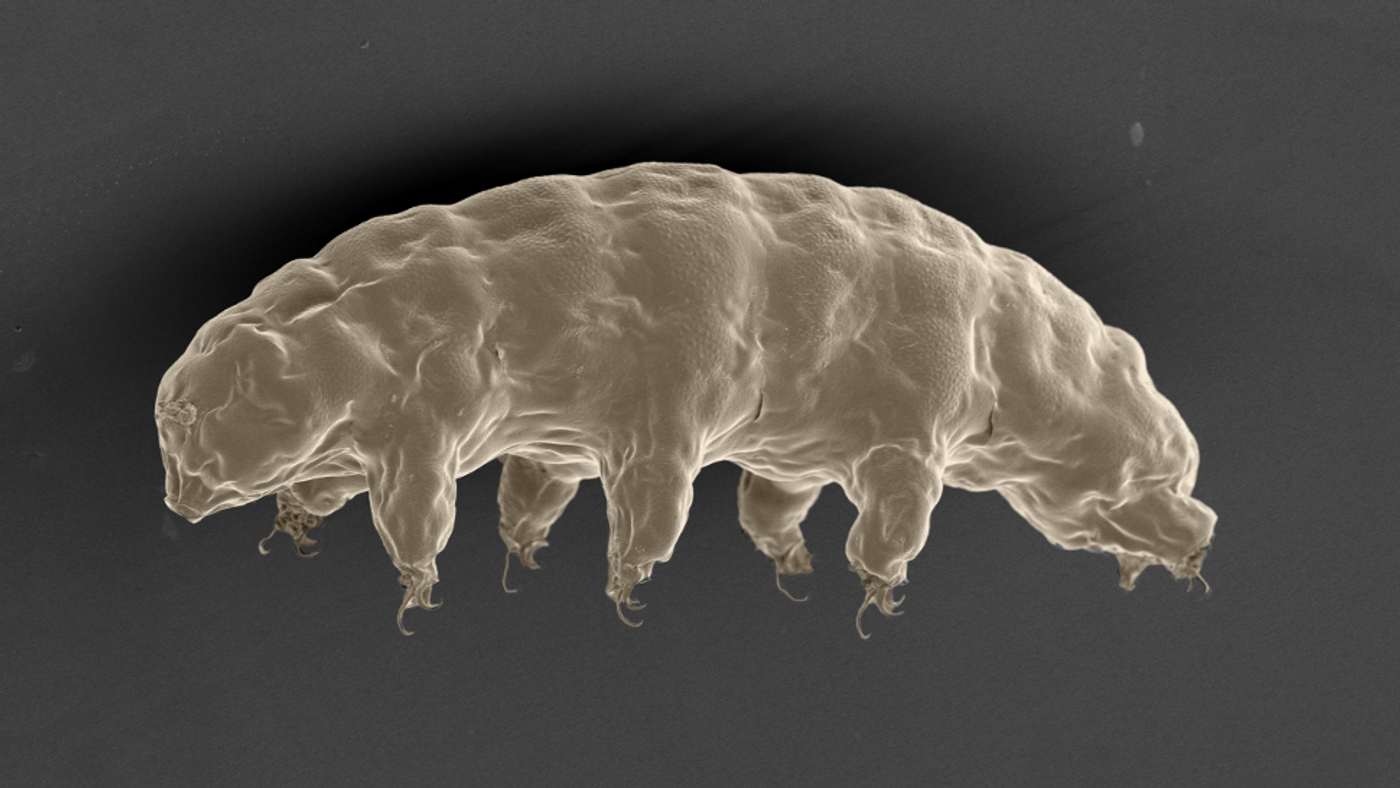What Would it Take to Wipe Out the Tardigrade?
Have you heard of the tardigrade before? These microscopic critters are considered by many scientists around the world to be some of the toughest forms of life on Earth.
Image Credit: Tanaka S, Sagara H, Kunieda
Numerous studies have proven their resilience, showing that tardigrades can survive in even the most extreme circumstances where other forms of life couldn’t.
For example, tardigrades have shown their ability to withstand pressures as high as 600 megapascals (MPa), which is far greater than any exhibited by our ocean floors.
In another experiment, scientists sent tardigrades up into space to see if they could survive the cold and bitter vacuum where most other life forms would die, and miraculously, many survived and continued reproducing.
Did you think starving them might work? Think again; these creatures can survive several decades without drinking or eating a single thing.
Now that we’re all back to square one with this mind-boggling question, what would it take to cause a mass extinction event for tardigrades? That’s a question researchers from both Harvard University and the University of Oxford tried to answer in a study published in the journal Scientific Reports.
With their durability being duly noted by the scientific community, the researchers wanted to think outside the box and consider what kind of astrophysical-based disaster would have the potential to wipe out the tardigrade species.
“A lot of previous work has focused on 'doomsday' scenarios on Earth - astrophysical events like supernovae that could destroy the human race. Our study instead considered the hardiest species - the tardigrade,” said study co-author Dr David Sloan from the University of Oxford.
“As we are now entering a stage of astronomy where we have seen exoplanets and are hoping to soon perform spectroscopy, looking for signatures of life, we should try to see just how fragile this hardiest life is.”
Related: This is how tardigrades mate
They brainstormed a host of astrophysical events that might fit the bill for wiping out life on Earth as we know it, including asteroid impacts, gamma-ray bursts, and supernovae, and then used mathematic modeling to determine their effectiveness.
Each of these events would have a high likelihood of wiping out human and other surface animal species, but perhaps not for tardigrades.
An asteroid impact is one of the extinction theories for the dinosaurs, so we’re aware of just how catastrophic one would be to humans and other animal species. On the other hand, the dangers of gamma-ray bursts and supernovae come from the radiation that becomes beamed at the Earth, which could eradicate our ozone layer, destroy all living cells on the Earth’s surface, and boil the water in the oceans.
Tardigrades, which are known to survive just fine in the harsh conditions of outer space, seem to be resistant to the damaging effects of radiation, so perhaps gamma-ray bursts and supernovae are out of the question completely. Additionally, they would occur so far away from Earth that they wouldn’t boil the oceans; if anything, they might just hinder life on the surface.
That just leaves the asteroid theory, but astronomers don't think there any projected intersections with asteroids large enough to wipe life out in the future, so we’re probably safe on that front too.
“To our surprise we found that although nearby supernovae or large asteroid impacts would be catastrophic for people, tardigrades could be unaffected,” Sloan continued. “Therefore it seems that life, once it gets going, is hard to wipe out entirely. Huge numbers of species, or even entire genera may become extinct, but life as a whole will go on.”
Related: Tardigrades have tons of foreign DNA
With these findings in mind, tardigrades seem to have it made. The research strongly suggests that tardigrades could survive longer than any other animal species on the planet. Moreover, they’re likely to stick around until the day our Sun grows into a red giant and swallows the Earth.
Until then, however, we’ve still got plenty of time to learn from tardigrades; we’re still at least 7-10 billion years away from the day the Earth gets swallowed by the Sun.
The study really makes you think about what could be hiding just below the surface on seemingly "lifeless" planets. If tardigrades could survive such harsh conditions on Earth, then what's to stop them (or another comparably-durable species) from surviving on other planets? This concept highlights why it's so important to study planets like Mars and moons like Enceladus, Europa, and Titan.
Source: University of Oxford
-
MAY 07, 2024Is It Anti-RNP or Anti-Sm/RNP?
-
MAY 08, 2024Expand your Multiomic Capabilities with RNAscope™
- See More
-
MAY 07, 20243rd International Biosecurity Virtual Symposium
-
MAY 23, 2024For the Love of Digital PCR 2024
-
JUN 06, 2024The Future of Scientific Conferencing
- See More




















































